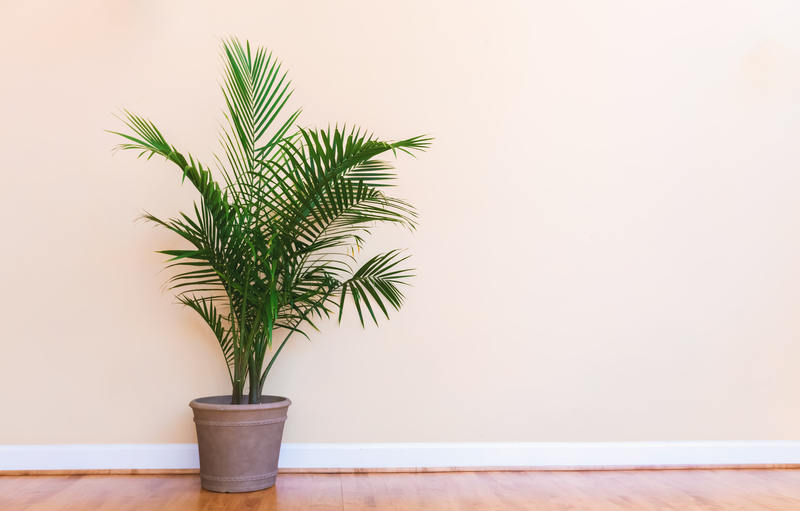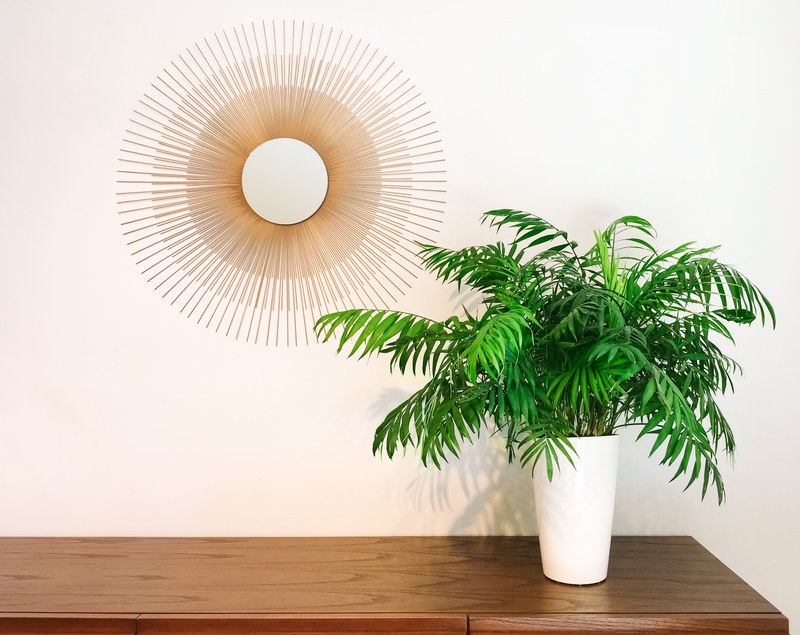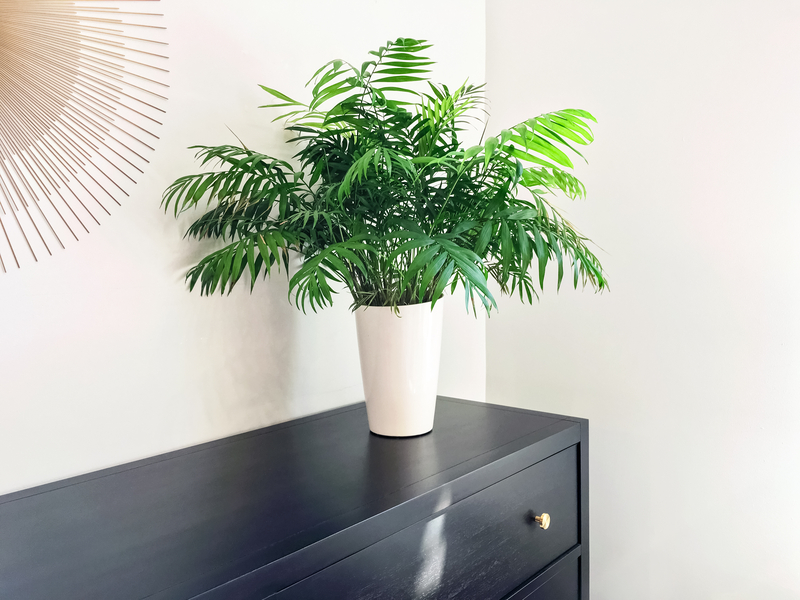With bright, luscious green fronds that take up plenty of space, palm plants are a great way to give your indoor environment the look of an outdoor palm tree. But, of course, without the inconvenience of bringing the outside indoors. So here’s all you’ll need to know about the areca palm and how to care for one of the most world-famous indoor plants.
What Types of Palm Plants Are There?
Palm Plants are known for their unique looks with their large evergreen leaves known as fonds. This tropical plant can line the streets of Miami or the halls of your home. However, finding the right palm plant may be difficult as there are over 2,600 different species. They aren’t all indoor varieties, but you still have to identify the suitable species to give it the proper care.
Is it a parlor palm? A Chinese fan palm? A bamboo palm? The plants might have a few things in common, but it’s always worth learning the unique quirks of your palm species.
What Soil Works Best for Palm Plants?
Palm Plants live best in loose and porous soil mixtures. These well-draining mixtures should range from a neutral to slightly acidic pH. In addition, you may be able to find a soil mixture of peat moss, leaf mold, and shredded bark specifically made for palm plants.
How Much Sunlight Does a Palm Plant Need?
There are plenty of palm species that would do perfectly well with bright, direct sunlight. But not every palm works that way.
With the areca palm plant, you’ll want bright, indirect sunlight, which means you’ll want to keep it indoors, but you will want it to get plenty of light in general. It sounds like a paradox, but it refers to setting the palm somewhere indoors where it can get a lot of light, but maybe have a curtain over the window to reduce the direct light rays. Somewhere where there is a sun-facing window, for example, can give your plant a lot of light.
What Temperature Works Best for Palm Plants?
Your palm plant should thrive as long as your home is between 65-80 degrees Fahrenheit. However, make sure you keep it away from drafty and colder areas of your home, as temperatures below 50 degrees will begin to damage your plant.
It’s not going to flourish in a cold, wintry area where there isn’t enough sunlight in the day to give the areca palm all the light it needs. And all the palm fertilizer and proper humidity levels in the world won’t make up for the wrong kind of sunlight. A potted palm like this may seem like an indoor plant like any other, but it’s still a tropical plant.
Do Palm Plants Enjoy Humidity?
As many palm plants are tropical varieties, your plant will likely prefer humid environments. However, in most cases, the average household humidity should be enough for your plant.
How Often Should Your Water Palm Plant?
Overwatering can often be a problem with palm plants. You don’t want sitting water in the palm plant’s pot. Instead, you’ll want to water it regularly, keeping the soil moist but occasionally letting it get dry. You want to keep the soil moist but let it dry between waterings once in a while. This period in between waterings can mimic the feast-or-famine nature of hot climates.
Finally, make sure that your water is clean for the plant. Distilled water is standard for plants, as many people like to avoid the chemicals like fluoride that can come with tap water.
What Size Do Palm Plants Grow To?
Indoor palm plants are much smaller than their outdoor cousins. However, they can still become a solid centerpiece as they grow to 4-6 feet tall as they display their large fonds. Unfortunately, this plant is a relatively slow grower and won’t quickly reach its mature size. They grow at about 10 inches a year, which means it may be several years before you can see your plant fully mature.
Most Common Bugs
As with most other indoor plants, Palm Plants run into pests like spider mites, mealybugs, and scale insects. If you notice bugs on the leaves, you should take a cloth with isopropyl alcohol on it to wipe down the leaves.
Most Common Diseases
In the case of disease, one of the biggest problems is the chance of potassium deficiency. You will notice this when the oldest leaves begin to die back from the tips. You can give your plant a controlled-release potassium supplement to add the necessary nutrients to the soil to fix this.
How Often Should You Repot Palm Plants?
For this palm plant, you’ll want to adhere to the sunlight and watering rules. Repot it every few months or so. Many people recommend using a time-release fertilizer in the spring, which will also help you get through the summer months. Give it some houseplant fertilizer in the growing season, and you’ll be amazed at how good it can look by summer.
How Often Should I Prune Palm Trees?
Palm Plants are unique in the fact that they don’t need to be pruned often. However, it is common for plant owners to over-prune these trees because they usually draw nutrients from old fonds. This over-pruning can damage the plant, so don’t worry about having a few discolored fonds on your plant. And when you do, make sure not to cut from the top of the plant.
What about Brown Leaves?
Brown leaves can look alarming, particularly given what you’ve learned about other plants. Generally speaking, brown leaves can be the result of too much direct sunlight or not enough water. If you can confirm that there are no bugs on the plant, you might want to alter the light or water routine to see if that helps the plant recover.
Conclusion – How To Take Care of Palm Plants
As a low-maintenance plant, your palm plant will be relatively easy to take care of at your home. But it’s still a palm plant. Of all the types of palms, areca palm plants can be highly forgiving, though, so it’s worth trying it out as an indoor pot-bound plant.
Make sure you know the species of palm you’re working with before you consider using these tips for any old palm. After all, issues like yellowing can be different than brown leaf tips, and a ponytail palm isn’t the same as a majesty palm, which isn’t the same as a date palm.
Similar Posts:
How to Take Care of a Coffee Plant
How to Take Care of an Air Plant
How to Take Care of a Pothos Plant




